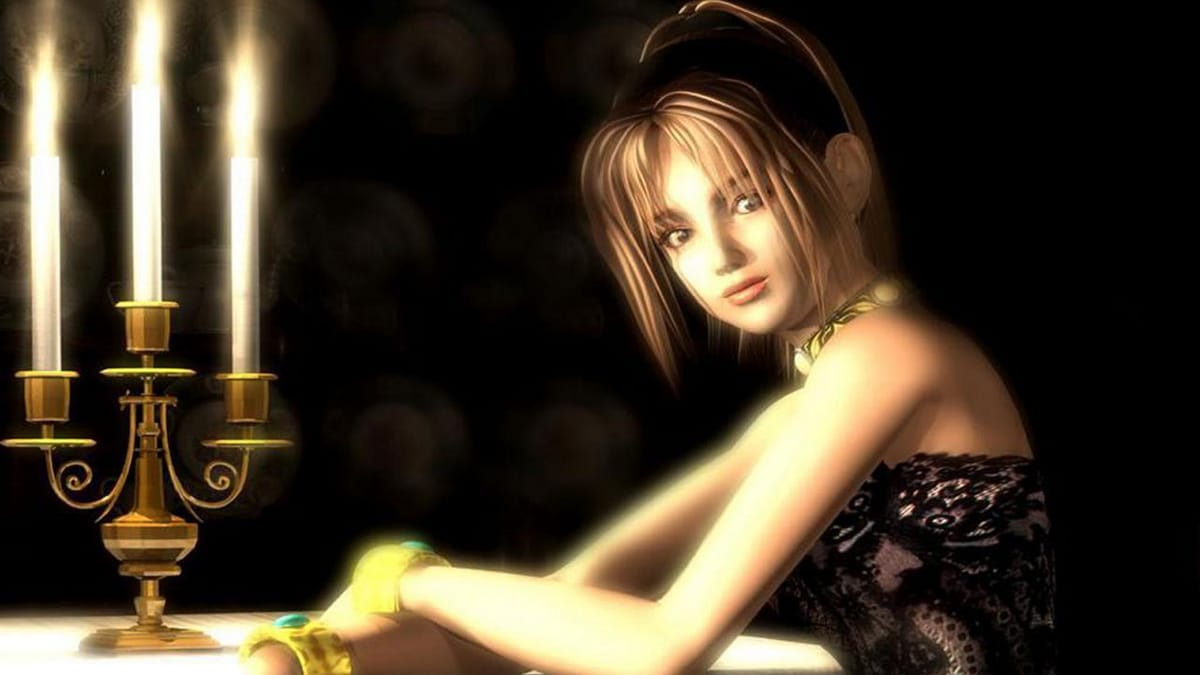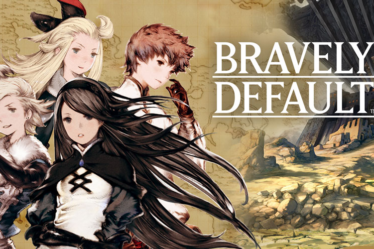
This article was originally published in Italian on Gamesource.it in 2009.
“Koudelka” is the debut RPG title from Sacnoth, a development team led by composer Hiroki Kikuta (Secret of Mana) and composed of numerous former members of Square’s golden-era staff. The team is best known for the title they released a few years later on the PS2: Shadow Hearts. While many may not remember—or may not even be aware of—the exploits of the buxom protagonist, Koudelka deserves credit for introducing PS1 RPG gamers to a mature, horror-tinged adventure, a true novelty in the 32-bit console’s library, if we exclude Square’s cinematic Parasite Eve. Dismissed as a flop by Western critics for some questionable game design choices, the title has earned a place of honor in the collections of the most dedicated RPG fans due to its rarity. It also laid the narrative groundwork for the more famous Shadow Hearts, which would soon make its debut on Sony’s more powerful black monolith.
“October 31, 1898—what better day to venture into the Nemeton Monastery, said to be cursed and even haunted by demonic creatures?”
This must have been the thought of the game’s three protagonists: the beautiful medium Koudelka Iasant, the blond and cocky adventurer Edward Plunkett, and the Vatican envoy James O’Flaherty. The narrative of Koudelka takes us deep into the game’s sole location, the Nemeton Monastery, and the script, aside from its esoteric elements, is perhaps one of the most believable we’ve ever had the pleasure of experiencing. Unlike the vast majority of genre titles, Koudelka doesn’t aim to place players in the shoes of a group of adventurers in a fantastical world, nor does it tell the heroic tales of three individuals with superhuman powers. Instead, it focuses on the three personalities who, on the night of October 31, 1898, in Wales, explore the Nemeton Monastery, wrapping up the entire narrative arc in just a few hours. The three, driven by entirely separate personal motives, end up crossing paths in the dark, anxiety-inducing rooms of the ancient British structure, forming the most mismatched party of characters in recent memory. The protagonists share nothing but their earthly fragility and often end up bickering over trivial matters due to their deeply contrasting personalities. A detailed and gripping chronicle of three profoundly different individuals, finely characterized, human, and believable in their exchanges and personal motivations: when have you ever encountered, in the gaming world, a dialogue between two protagonists arguing over their poetic tastes?
This is precisely Koudelka’s strong point: its macabre and realistic atmosphere that permeates the entire production, almost like a gaming transposition of Lovecraftian literary sensibilities, making it unique and unmatched in the PS1 gaming landscape. An interactive novel with noir-gothic tones, capable of winning over the hearts of players with the most demanding tastes; undoubtedly an unlucky production, one that many have criticized for its undeniable flaws while underappreciating the equally present strengths of its narrative.
The adventure, despite spanning four discs, has a surprisingly short duration of 10-15 hours, with low-to-medium replay value. The game does feature two endings (plus a third that ends the adventure prematurely), but these don’t require any specific gameplay achievements: the bad and good endings depend solely on whether the player succeeds or fails in the final boss fight.
Sadly, we now come to the purely gaming aspects of the title. Sadly, because this is where the game stumbles repeatedly and earns itself the label of a “missed opportunity.”
Without a doubt, Koudelka had great potential on paper. The development team, though working under the Sacnoth name for the first time, largely hailed from Squaresoft (now Square Enix). The hype at the time was through the roof, with rumors suggesting the title would immerse players in a new gaming dimension blending survival horror and RPG elements. The charisma of the beautiful Koudelka, along with her provocative character design, had almost convinced the public of the production’s quality.
But in reality, Koudelka sits somewhere between a survival horror game, a classic RPG, and a tactical RPG: a mix of genres highly appreciated in the Land of the Rising Sun. Exploration takes place on pre-rendered 2D backgrounds, much like in Sony’s 32-bit Final Fantasy titles, while combat—randomly encountered—puts the player in control of the protagonists on a 3D grid divided into a 5×5 chessboard. The turn-based battles are structured like those in a tactical game, allowing limited movement across the grid and requiring proximity to enemies to attack. The character growth system offers significant customization, though each protagonist is naturally inclined toward a specific role (e.g., “Tank,” “Healer,” etc.). Had the game been developed with more care, the mix of atmosphere and genres could have launched a new RPG subgenre and potentially birthed a successful new franchise. However, despite multiple delays, the game is riddled with inaccuracies, technical oversights, and several game design flaws.
The exploration feels reminiscent of Resident Evil, but the collision detection between 3D polygonal models and the 2D backgrounds is laughable. It’s common to get stuck between invisible virtual corners or to struggle to understand what’s on-screen due to the compressed, dimly lit backgrounds. Another unfortunate choice is forcing the player to repeatedly press the action button to climb or descend stairs—or, worse, simple steps between areas. The original control mapping is also poorly functional, assigning the triangle button to “Run” and the X button to “Search,” making it impossible to run and search simultaneously without adjusting the settings. Fortunately, this can be easily remedied in the options menu. Additionally, in the year 2000, the game lacked compatibility with the DualShock’s analog sticks.
The encounter rate is low-to-medium, allowing players to explore the cursed monastery’s maps without being overly bothered by random battles, which in this case are not only annoying but also excessively long. According to Sacnoth, the game was meant to appeal not only to fans of Japanese RPGs but also to newcomers drawn to the mature tone of the story. As a result, the early stages are incredibly easy, with the difficulty curve rising sharply as the game progresses. As mentioned earlier, battles are unnecessarily prolonged due to inexplicably long loading times, caused by poor optimization of the game’s code and engine, which struggles to load polygonal models after every action (for cinematic reasons, during spells or non-physical attacks, all character models except those involved in the action disappear and reload after the animation).
Another poorly implemented feature is the game’s attempt to blend survival horror and RPG elements: breakable weapons. All weapons in the game, divided into different categories, can break at any moment without warning. There’s no durability bar or stat to indicate an item’s condition, and the only way to properly equip your party is, paradoxically, to fight. There are no shops in the monastery, and the only way to acquire equipment in later stages is to hope enemies drop useful items after defeat. The interesting ability to customize character stats also proves to be a double-edged sword: while it may delight stat enthusiasts, the magic-heavy system renders any player-devised strategy largely useless, making a magic-focused build the most practical choice.
Surprisingly, the game features soft-save rooms where players can restart after death, a genuinely appreciated feature in a sea of good but poorly executed ideas. Koudelka falters in game design, with no excuses other than the relative inexperience of the Sacnoth team at the time. While the developers had a wealth of interesting ideas, their technical execution can be summed up in one word: failed.
Despite its many flaws in gameplay, Koudelka is visually impressive. The FMVs, starting with the intro, are well-crafted (Square’s influence, perhaps?), as are the polygonal character models and pre-rendered 2D backgrounds. The monster design is superb, perfectly capturing the game’s sickly atmosphere and further enhancing a brand already convincing from a narrative and environmental standpoint. However, the terrible loading times, especially during combat, significantly detract from the experience. We would have gladly sacrificed the entirely in-engine cutscenes—animated via motion capture—for better optimization of the game’s code and engine. Unexpectedly, the soundtrack, composed by the aforementioned Hiroki Kikuta, is almost entirely absent during exploration—perhaps a stylistic choice—only resurfacing during battles and narrative FMVs. Kikuta’s style, however, seems better suited to a classic RPG rather than the grim, unsettling world of Koudelka, and the sporadic tracks accompanying battles feel out of place and forgettable.
Credit to the developers for the voice acting: the PAL-ITA version of the game is fully localized in Italian, with all dialogue voiced (sometimes overly emphatically). This localization choice, while debatable—given that even the Japanese version featured entirely English voice acting to respect the Welsh setting—is nonetheless appreciated by Italian players.
Koudelka is unfulfilled potential. All the great ideas that could have revived survival horror-infused RPGs to the heights of the much-praised Sweet Home for the NES are poorly implemented in a game system that falters not so much in technical optimization but in its core game design. There are many positive and commendable aspects in Sacnoth’s first title, but as critics, we cannot overlook our duty: to judge a production that fails on the purely gaming front. Too simple for tactical RPG fans, too difficult for survival horror enthusiasts; a half-flop that could have shone under the guidance of a more experienced development team.


